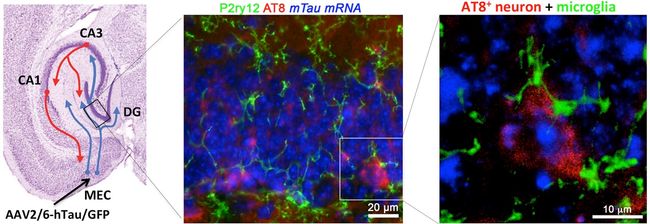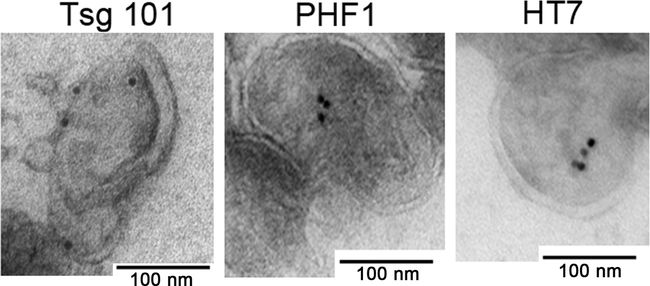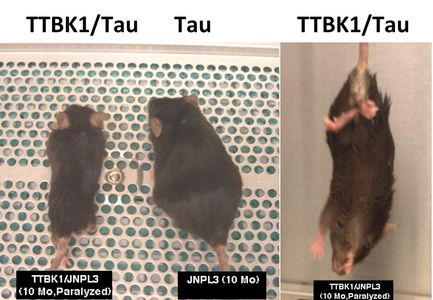Laboratory of Molecular NeuroTherapeutics
PI: Tsuneya Ikezu, M.D., Ph.D.
Research Interests:
Welcome to the Laboratory of Molecular NeuroTheapeutics at the Boston University School of Medicine. Under the direction of Tsuneya Ikezu, MD, PhD, the laboratory mainly focuses on neuroimmune cell-mediated pathobiology of Alzheimer’s disease, frontotemporal dementia, and recently autism spectrum disorders.
Alzheimer’s disease
The primary focus of our lab is to understand how tau protein propagates in a stereotypical manner in Alzheimer’s disease brain. Our research recently identified that microglia and exosomes, a nanoscale extracellular vesicles secreted from cells, mediate the spread of pathogenic tau protein in animal models of AD. We are interested in understanding the molecular composition, the cellular origin, transporting machinery, and cellular destination of exosomes in animal and human brains.
Fig. 1 Immunoelectron micrograph of exosoms isolated from aged PS19 tau transgenic mouse brain. Colloidal gold nanoparticle detects exosomal marker Tsg101 (left), phosphorylated tau-specific PHF1 (middle) or human tau-specific HT7 monoclonal antibodies (right).

Fig. 2. Immunofluorescence of dentate granular cell layer of dentate gyrus (DG) after stereotaxic injection of adeno-associated virus expressing P301L tau mutant and green fluorescent protein genes (AAV2/6-hTau/GFP) into the medial entorhinal cortex (MEC, left panel). In the DG, granular neurons express mouse tau mRNA (mTau, blue) and accumulate phosphorylated tau (AT8, red) by the spread of pathogenic tau from MEC neurons and are surrounded by microglia as detected by the specific marker P2ry12 (green) (middle and right panel).
Related links:
https://www.alz.org/aaic/releases_2016/awards-inge-grundke-Iqbal.asp
http://www.alzforum.org/news/research-news/deadly-delivery-microglia-may-traffic-tau-exosomes
http://stke.sciencemag.org/content/8/402/ec329
Tau-tubulin kinase 1 (TTBK1)
A second focus of our lab is the investigation of tau-tubulin kinase 1 (TTBK1) and their role in protein phosphorylation leading to the formation of tau aggregates within neurons, a key pathology observed in AD and frontotemporal dementia. We are currently performing a cutting-edge drug discovery program to identify potential inhibitors to TTBK1 with the goal of identifying potential new therapeutic(s) that could prevent tangle formation within neurons in these neurodegenerative states.
Fig 3. Extensive hindlimb atrophy in TTBK1/Tau double transgenic mouse as compared to age-matched tau transgenic mouse (left). Hindlimb clasping phenotype in TTBK1/Tau mice (right).
Related links:
http://www.ncbi.nlm.nih.gov/pmc/articles/PMC4009424/
http://www.sciencedirect.com/science/article/pii/S0002944013008353
Autism Spectrum Disorders (ASD)
We are interested in the role of microglia in the pathobiology of ASD. Environmental factors, such as infection, environmental pollutant, and maternal stresses are emerging risks of ASD. Systemic infection in the first trimester of pregnancy is known to increase the risk of ASD in the offspring. We hypothesize that such environmental factors dysregulate brain development through microglial dysfunction. We employ system biological approaches to comprehensively characterize the microglial and neuronal development in animal models of ASD.

